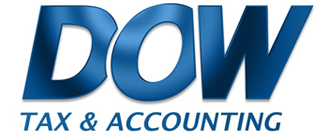Scan through this list for ideas, and check out a few examples at the end. Let us know if you would like to schedule an appointment to discuss your situation.
Individual
- Charitable donations – Accelerate your tax deduction by using a Donor Advised Fund
- Charitable donations – Donate appreciated securities/assets to avoid tax on gain and still take deduction for full value
- Itemized deductions – Bunch deductions (especially donations) into every other year to take advantage of standard deduction as well
- HSA – Maximize the tax benefit by fully funding your HSA and investing within the account, then pay for medical expenses with other money and document carefully. The HSA balance will grow tax free and you can reimburse yourself from the account at any time in the future. If it grows beyond your medical expenses you can always withdraw it after age 65 and pay regular tax like an IRA. When you contribute as an employee (not your own business) you not only save federal and state income taxes, but payroll taxes as well.
- Retirement Saver’s Credit – If your income is under $65,000 (married) you can get a credit based on your retirement savings
- Backdoor Roth IRA contributions for income over $208,000 (married). Make a nondeductible traditional IRA contribution, then convert to Roth despite being over the normal income limit.
- 529 Educational Savings Plan – Go to my529.org to save for your children’s or grandchildren’s college educations. Get a 5% Utah credit for contributions and investments grow tax free.
- Tax gain harvesting – If your income is under $105,000 (married) and you have long-term appreciated securities in a taxable account
- Stimulus payments – if you received a reduced amount for round 3, consider whether you can lower your 2021 income to the point where you can get a credit to make up the difference
- Credits for education, solar, child care, adoption, and subsidized health insurance
Business & Self-Employment
- Maximize retirement savings through IRA, SEP IRA, self-directed IRA, 401(k), and/or Defined Benefits Plan
- Use S corporation to reduce self-employment tax
- Rent your home to your S corporation for some tax-free income
- Establish an overtime meals policy for all employees for tax-free meal allowances
- Hire family members – benefits and costs, depending on your situation
- Meals & Travel, including annual business retreat
- Maximize vehicle deductions
- Cell phones
- Home office
- Prepay certain expense to accelerate deductions – high income earners may want to defer deductions to next year if you expect your tax rate will be higher next year
- Optimize choice of entity type for self-employment tax, debt basis limitations, family employees, and health insurance/medical expense deductions
- Qualified Business Income Deduction – optimize for income over $326,600 (married)
Investment Real Estate
- Cost segregation to take more depreciation sooner and to reduce tax rate on sale of property. Most beneficial for real estate professionals with commercial buildings or owner-occupied commercial buildings.
- Dealer vs. investor considerations
- Passive loss limitations
- Active rental real estate status
- Real estate professional status
- Rental activity grouping rules
- Sell rental you previously lived in to your own S corporation to capture residential exclusion
- 1031 exchange and installment sale options to reduce tax on sale
Examples
Individual. Donor Advised Fund/Bunching itemized deductions. – Taxpayer has income of $150,000 and donates $15,000 annually. Other itemized deductions include state income tax and property taxes of $10,000 and mortgage interest of $8,000. Total itemized deductions each year are $33,000. In 2021, taxpayer donates the regular $15,000 to charity plus $30,000 to a donor advised fund, which is then donated from that fund to charity in each of the next two years, so the charity receives the donations on the same schedule as before. 2021 itemized deductions are increased by $30,000 saving $6,600 in federal tax. Without donations in 2022 and 2023, the standard deduction of $25,100 is taken, so federal tax is higher by $1,738 (22% tax x ($33,000-$25,100)). Net tax savings over three years = $3,124.
Business. Married taxpayer with 2 teenagers, nets $140,000 of self-employment income. Makes S election – $5,900 tax savings. Hires teenagers and pays $5,000 each – $2,400 tax savings. Implements overtime meals reimbursement policy – $1,200 tax savings. Rents home to business once a month for company meetings/events – $2,900 tax savings. Total annual federal tax savings = $12,400.
Investment Real Estate. Sell rental to your own S corp. Taxpayer purchased home in 2012 for $250,000 and lived there until 2019, then started renting it out. In 2021 home appraises for $450,000 and taxpayer sells to own S corp and continues to rent. Taxpayer reports sale on personal return with a small amount of depreciation recapture, and $200,000 tax-free gain because taxpayer owned and lived in it for 2 out of the last 5 years. The new S corp reports a new rental with a basis of $450,000 to start depreciating.
